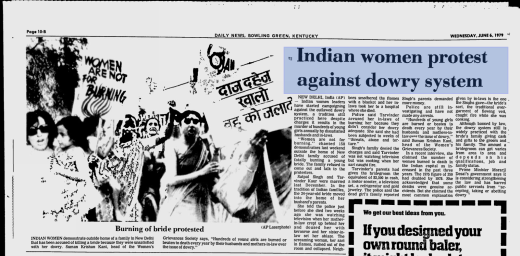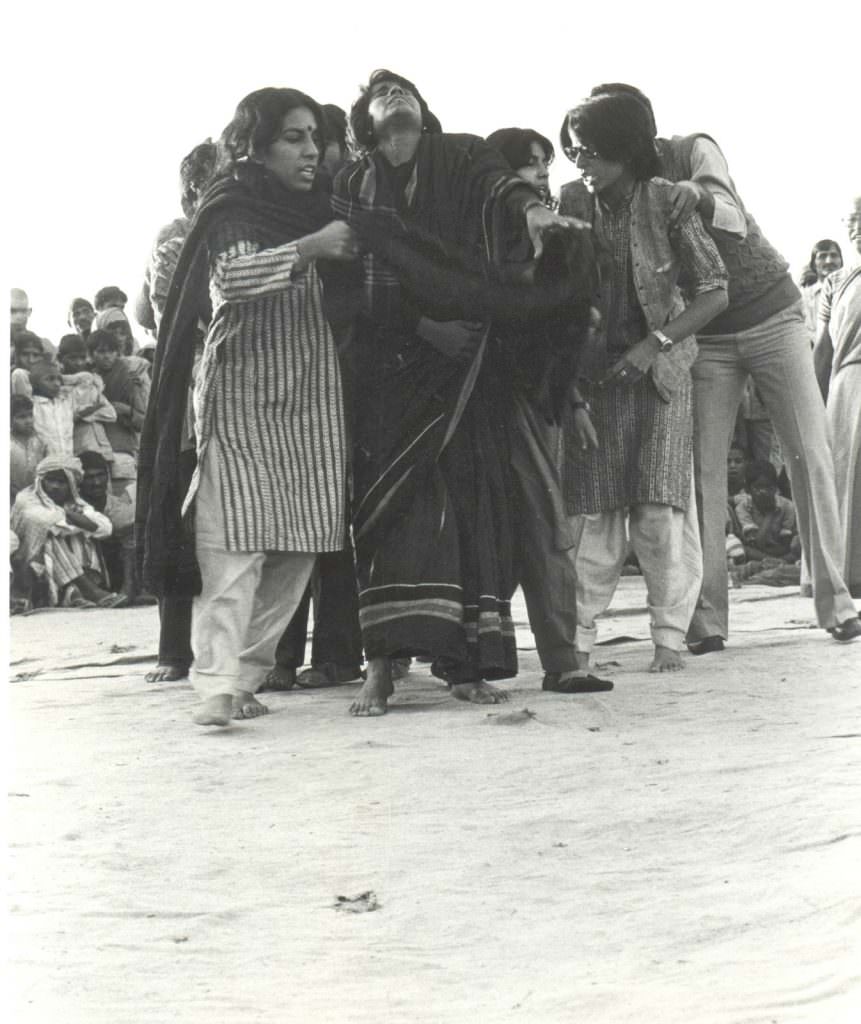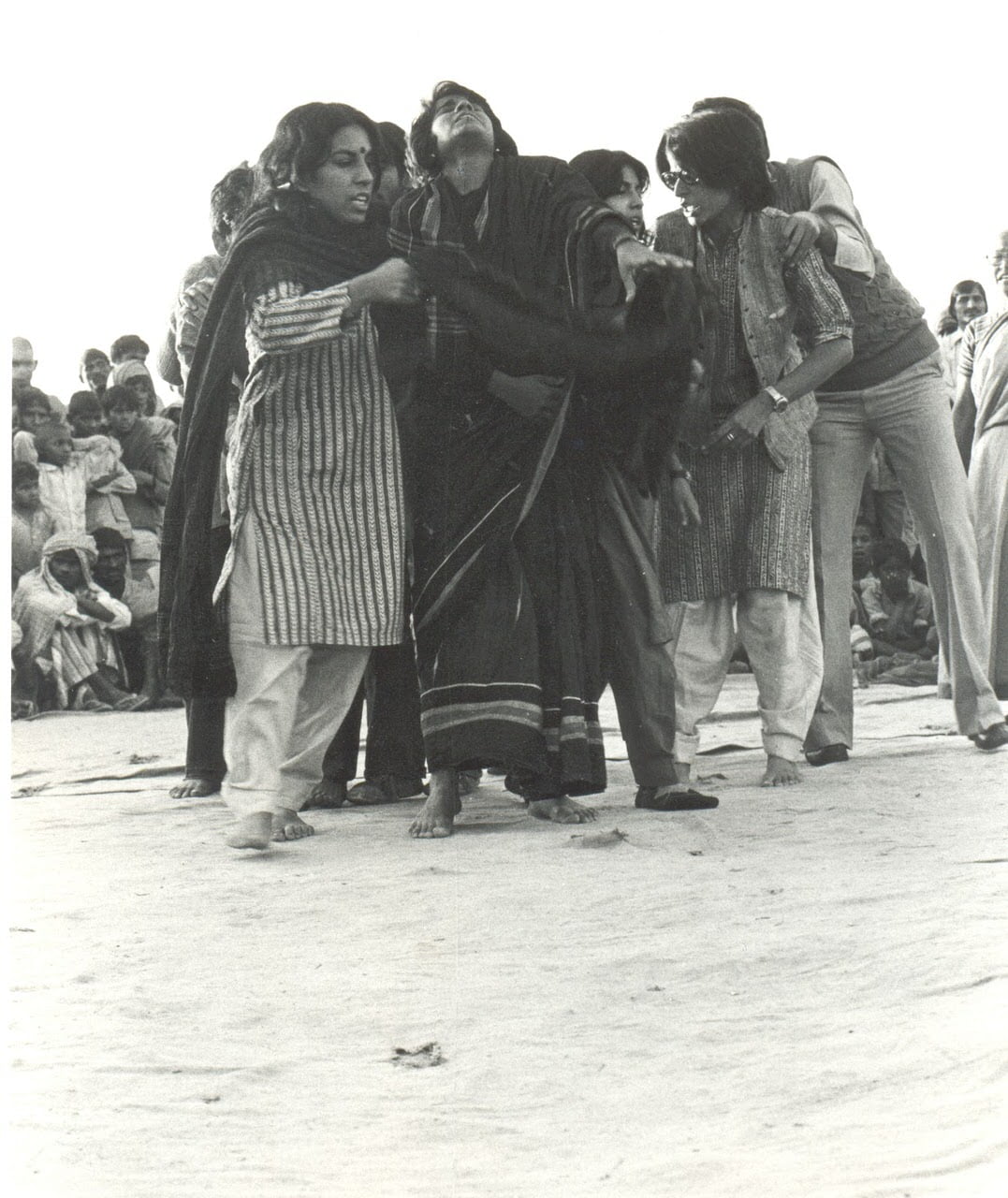The feminist movement in India, starting before independence, has come a long way. After a lull in the immediate post-independence years, the feminist movement again gained momentum in the 1970s. There were many issues raised by women when it became clear that independent India had not provided the justice and equality promised to women. One such demand was the end of the dowry system, with action to be taken for crimes against women for dowry.
Even though the Dowry Prohibition Act has been in place since 1961, the practice of dowry goes on undeterred. When it is not demanded outright, it is implied that the bride’s family will have to give ‘gifts’ and provide for a certain standard of living for the groom and his family. On refusal, there is always the chance of the bride being harassed or even murdered (for example, see here and here) – crimes which are not even included in the Dowry Act and had to wait till 1983 to be considered ‘legal’ crimes.
The movement against dowry demands and harassment came to its peak in the 1980s, though campaigns against dowry had been carried out earlier as well. The earliest protests against dowry in the post-independence feminist movement were made by the Progressive Organization of Women in Hyderabad in 1975, with 2000 people turning up at one among the many demonstrations. Eradicating dowry was also an agenda of other women’s movements like the Shahada Movement of 1972.
However, in 1977, the movement gained momentum when, in Delhi, the demands were raised, including not only an end to dowry but also against crimes committed for dowry, especially murder and abetment to suicide. Protests were and since then have been carried out in other parts, including Punjab, Maharashtra, Karnataka, Gujarat, Madhya Pradesh and Bengal. However, the movement saw its largest action in Delhi, probably because Delhi had the highest number of dowry murders in the country.

In Delhi, the first organisation to raise the issue of dowry and crimes related to it was Mahila Dakshata Samiti. It was, however, Stree Sangharsh, a feminist group, that made dowry harassment a common topic in households. On June 1, 1979, they organised a protest march against the death of Tarvinder Kaur, who was burned by her mother-in-law and sister-in-law, claiming it to be murder for dowry. The initiative was taken by Indraprastha College Women’s Committee, who approached Stree Sangharsh to organise the march. Progressive Students Organization also rallied with the other two, showing the enthusiasm and effect on the youth such social issues had. The agitation became a national success and was covered excessively by the press, with many more protests being organised all over Delhi.

Another major agitation occurred in Malviya Nagar, against the murder of Kanchan Chopra. In this case, a complaint of dowry harassment had been lodged by the brother of the victim on June 29, however, the police refused to register it, because it was a ‘family matter’. The next day, Chopra was dead. Chopra’s family, along with the residents, marched to the police station demanding that the in-law family be charged for murder. What was interesting was that the people themselves took the initiative to act.
The earliest protests against dowry in the post-independence feminist movement were made by the Progressive Organization of Women in Hyderabad in 1975
In another instance, a woman, Premlata, broke off her engagement two days before the marriage due to excessive dowry demands. She also asked Nari Raksha Samiti, a women’s organisation, to raise a protest against the groom’s family. The organisation demonstrated in front of the house of the man and the family was shunned by society.

These movements showed the effects that women’s groups and feminists had on society in raising the issue of dowry harassment in the public sphere. However, they also faced various obstacles in reaching out to people, most prominently against the societal attitudes towards marriage.
The women who suffered at the hands of their husbands or in-laws often continued to stay with them for lack of an alternative. Going back to their parents’ home or living separately was not considered desirable as the women and their natal family had to suffer social ostracism, and landlords didn’t rent to single women for fear of them being sex workers or thought to be one by others. Moreover, women were (and still are) socially conditioned to be obedient, submissive to their husbands that even after physical, sexual and/or mental abuse, the women stayed with their husbands out of duty.

Stree Sangharsh also argued in its manifesto for demands against the dowry system that capitalism as a market system facilitates the practice of dowry. They claimed that the sexual division of labour, the need for reproductive control, the patriarchy, as well as female labour power, also constituted private property under capitalism. And acted as the reasons for women’s oppression. They analysed that in practice, dowry becomes the price paid for the groom every day, hence becoming a consumable capital for the in-law family. Thus, the groom becomes a way to obtain liquid capital as there is no ownership by the buyer of the price for the groom.
Moreover, before the movement, death by fire was considered suicide and a family matter. Even when the victims lived long enough to incriminate her husband or in-laws, the follow-up was so delayed, or not thorough, and finally these cases were registered as suicides. This was probably also because the laws specifically for crimes related to dowry demands were not in place by then. However, even when the cases were registered as murder, the testimony of the victim was considered insufficient evidence.
Also Read: Another Domestic Violence Story; Yes, Dowry Is Still Rampant In India
While it is fair that a murder accused cannot be convicted solely on the testimony of the victim, in keeping with the laws. However, as Radha Kumar argues, when relating to dowry, the testimony should at least prompt a further investigation of the case. Moreover, though there were complications in convicting people of dowry murders, since the two main evidences were the victim’s testimony and secondly, the testimony of her relatives, neighbours, or written proof, like a letter by her, due to corruption and a nonchalant attitude of the police the accused were more often than not released. Kumar further critiques the police system that was not equipped enough with technology, methods or strategies to tackle such sensitive cases. Thus, both at the social and legal front, women were in a disadvantaged position concerning the demands of dowry.
Before the feminist movement, death-by-fire was considered as suicide and a family matter.
It was after the efforts of activists as well as ordinary people themselves that there were positive changes. People were ready to raise their voice against the issue. Their involvement widened the range of the movement and showed that crimes committed for the demand of dowry were being opposed on a more personal level as well. As Kumar states, the efforts of activists had reversed the years of parochial attitudes within weeks. People used different tactics, like public shaming, assembling or blackening the face of the husband, to intimidate the perpetrators or the police. Even the women who had suffered at the hands of their in-laws were not afraid of coming out against their perpetrators, or of being targeted publicly.
Women’s organisations were also monumental in their contribution to the cause. They carried out the organisation of people around Delhi and collected information on the number of deaths and the cases that were put off as suicides were murders. They held public meetings where people pledged not to take or give dowry. Feminists also demanded that the proof that a woman killed herself because of harassment for dowry be considered enough for a charge of abetment. Moreover, such enthusiasm and participation from the people encouraged women’s activists and feminists to educate people about the abuse and harassment associated with dowry. One of the first organisations to do so was Stree Sangharsh, through a street play Om Swaha.

By 1978, there were rewards for the efforts of activists and people. The issue of harassment and murder for dowry was brought to the national stage and became a public concern. The Inspector General of Police also met with Mahila Dakshata Samiti, and they agreed to set up a committee, also consisting of the Superintendent of Police and a Deputy Superintendent, for the cases of dowry harassment. However, it was only after many years that the Anti-Dowry cells became fully functioning, even then only dealing with cases of dowry demand or harassment, excluding dowry murders.
There were further developments in the legal system of the country. In December 1983, the Criminal Law (Second Amendment) Act was passed, introducing Section 498A to the Indian Penal Code. According to this section, cruelty, specifying both physical and mental harassment, was made a non-bailable offence, punishable by up to two years in jail and a fine.
The Indian Evidence Act was also amended by including Section 113A, which helped with proving abetment to suicide. Lastly, there was also an amendment of Section 174 of the Criminal Procedure Code, which made it compulsory to do a post-mortem of a woman who died within 7 years of marriage. Even earlier, the Central Government, in November 1980, ordered a mandatory investigation and post-mortem of a woman who died within 5 years of marriage under unnatural circumstances. In September 1980, the Haryana government took an initiative to make it compulsory to register unnatural deaths of married women as murder (Section 302, IPC), while cases with abetment to suicide were registered under Section 306 of the IPC.
Also read: The Dowry Prohibition Act, 1961 | #LawExplainers
There were many cases whose verdicts were given in favour of the victims as well. In one case for dowry harassment in Delhi, for instance, the accused was refused bail and the victim was ordered to collect her dowry. In 1985, for the case of Sudha Goel, a woman who was murdered for dowry, the earlier Delhi High Court judgement was reversed, and the Supreme Court sentenced the mother-in-law and the husband to life imprisonment while letting the brother-in-law go due to insufficient evidence.
The agitations against demand and harassment for dowry forged the way for changes in socio-cultural perceptions of the practice among people, as also amendments in laws. These movements, forming a significant part of the larger feminist movement in India, were successful in creating a space for dowry as not only an orthodox but also an inhumane aspect (even leading to murders) of society.
References
- Kumar, Radha. The History of Doing: An Illustrated Account of Movements for Women’s Rights and Feminism in India, 1800-1990. New Delhi: Zubaan, (Kali for Women), 1993.
Featured Image Credit: a scene from the street play Om Swaha via mayakrishnarao.blogspot.in
About the author(s)
Himanshi is pursuing Masters in History and hopes to be a historian one day. She loves to read books, and even more to collect them. In her free time, she likes to explore historical haunts. Also, she is a foodie and spaghetti makes her heart race.





That is fine. But law is grossly misused nowadays..women have made a joke of the existing laws. They are terrorists in ways worst than real terrorist. Almost 100 percent women nowadays use these laws as a tool to make the husband family bow to her unjustified demands. She tortures the husband his brother , mother , father, sister mentally , financial and every way she can think of. She destroys their self respect in every way she can podsiblly do. Women are the worst nightmares of this century. No amount of words can express the wrongs done by today’s women…